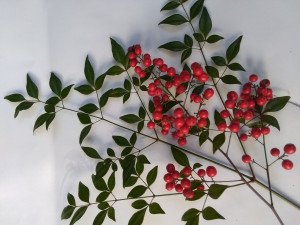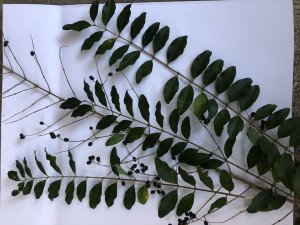How poorly did Hernando de Soto and his fellow conquistadores think of Florida upon arrival? Well, simply put, Florida’s dreadful flora and fauna made founding states like Massachusetts and Virginia look tame in comparison.
The fruit of the native persimmon tree (Diospyros virginiana) contributed to this unpleasant experience, evoking passionate responses in an account from the very first Florida expedition. The astringency of the unripe persimmon caused mouths to turn and lips to pucker, but first impressions are not everything.
Persimmons constituted a cultural catchall, as they were used by Native Americans, consumed by early English, French, and Spanish settlers, and then utilized for furniture, booze, candies, breads, coffee, and even golf clubs.
A Southern staple
The native persimmon was a Southern staple and remained a symbol of the South until the end of the 19th century, which brought the introduction of the much preferred Japanese persimmon. Most folks now consider the native persimmon – a fruit tree with an abundance of cultural, culinary, and medicinal properties – a nuisance. So, what are we missing about the native persimmon?
The native persimmon’s growth ranges from about 20 to 100 feet tall and 25 to 35 feet wide, depending on its genetics, soil types, and sunlight. The tree tolerates varying moisture conditions. A member of the ebony family, the wood is dark, but also quite hard and heavy.
The dark green oval leaves turn a beautiful burnt orange or brick red color in the fall before shedding entirely. Only female trees bear fruit and multiple nearby trees increase the yield. Bright orange fruit hangs from the barren tree in the late fall and early winter. The native persimmon’s upright growth habit and checkered bark, resembling alligator skin, make it an attractive addition to any landscape.
Medicinal properties of choke-fruit
Persimmon likely comes from the Algonquian word pos, meaning choke, and the suffix from men, meaning fruit. Quite literally: choke-fruit. Indigenous people ate the fruit fresh, dried, and incorporated into bread loaves which they served to settlers.
Indigenous children and adults entertained themselves with a game that used persimmon seeds like dice. Highly sought after for its medicinal properties, different parts of the persimmon tree treated multiple maladies including fever, dropsy, diphtheria, and venereal diseases.
The astringency of the fruit made it a valuable antiseptic in the treatment of wounds. Some made syrups, vinegar, inks, and dyes from persimmons. Inventive Americans, from immigrant entrepreneurs to industrious enslaved families, brewed persimmon beer, wine, and brandy.
During the Civil War, Southern citizens used persimmon seeds for their buttons and their morning brews. Wartime blockades limited Southerners’ access to coffee and put coffee lovers of the South in dire straits. Out of desperation, they roasted persimmon seeds instead of coffee beans.
Newspapers reported that long-time coffee drinkers noted little difference in flavor. Woodworkers valued the persimmon for its weight and hardiness. Persimmon wood could be found at the head of a golf club, a gun stock, mallet, or chisel handle.
Prized by wildlife
Wild animals, above all, prized the plentiful persimmon – birds, squirrels, and bears, oh my. You might still hear some folks refer to persimmon trees as “possum wood,” and for good reason.
Raccoons and opossums, in particular, descended (and ascended) upon the persimmon fruit. People frequently found the furry bandits climbing up their persimmon trees, so much so that multiple folk songs recalled the sight. Here is one excerpt from an old field song:
Possum in a ‘simmon tree,
Raccoon on de groun’,
Raccoon ask de possum
To shake dem ‘simmons down.
This sight and the sight of the persimmon tree, altogether, began to lessen though. Just as de Soto and company encountered the “New World” and its new foods, the great plant and food exchange worked both ways.
By the 20th century, increased trade and transportation opened Americans’ access to more favored fruit trees, relegating the persimmon to a minor fruit unable to soar to the heights of apples and oranges. In addition, the New World traded its native persimmon for the Japanese persimmon.
The native persimmon tree still persists in the landscape of the Southeast, and, I hope, will return to prominence once again. The next time you need to plant a tree, consider taking home a living piece of history with the purchase of a native persimmon.
Jenna Noel Pope is the herb, vegetable, and social media manager at Native Nurseries. She holds a Bachelors and Masters in History from FSU.








